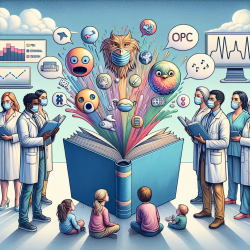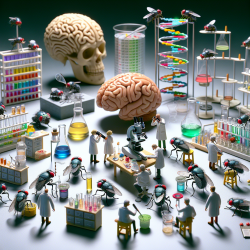Introduction
As professionals dedicated to enhancing the lives of children through speech-language pathology, we must continually seek innovative methods and evidence-based practices to improve our services. The 5th International Conference on Biomedical Engineering and Biotechnology (ICBEB 2016) presented groundbreaking research that holds significant potential for our field. By integrating these advanced imaging techniques, we can make data-driven decisions that lead to better outcomes for the children we serve.
Understanding Advanced Imaging Techniques
The ICBEB 2016 conference highlighted several advanced imaging techniques, including three-dimensional rotational angiography (3D-RA) and diffusion tensor imaging (DTI), which offer enhanced diagnostic capabilities. These technologies provide detailed insights into the brain's structure and function, allowing for more precise assessments and targeted interventions in speech-language pathology.
Implementing Imaging Techniques in Practice
For practitioners, integrating these imaging techniques into everyday practice can revolutionize the way we approach child development. Here are some steps to consider:
- Stay Informed: Regularly review the latest research and developments in imaging technologies to understand their applications in speech-language pathology.
- Collaborate with Experts: Work with radiologists and imaging specialists to interpret imaging results accurately and apply them to your therapeutic strategies.
- Customize Interventions: Use imaging data to tailor interventions that address specific neural pathways and structures involved in speech and language processing.
- Monitor Progress: Utilize imaging to track changes in brain structure and function over time, providing objective measures of therapy effectiveness.
Encouraging Further Research
While the current findings are promising, further research is essential to fully understand the implications of these imaging techniques in speech-language pathology. Practitioners are encouraged to engage in collaborative research projects, contribute to academic publications, and participate in conferences to share insights and experiences.
Conclusion
By embracing advanced imaging techniques, speech-language pathologists can enhance their practice and achieve better outcomes for children. These technologies offer a deeper understanding of the brain's role in speech and language development, allowing for more precise and effective interventions.
To read the original research paper, please follow this link: The 5th International Conference on Biomedical Engineering and Biotechnology (ICBEB 2016).










